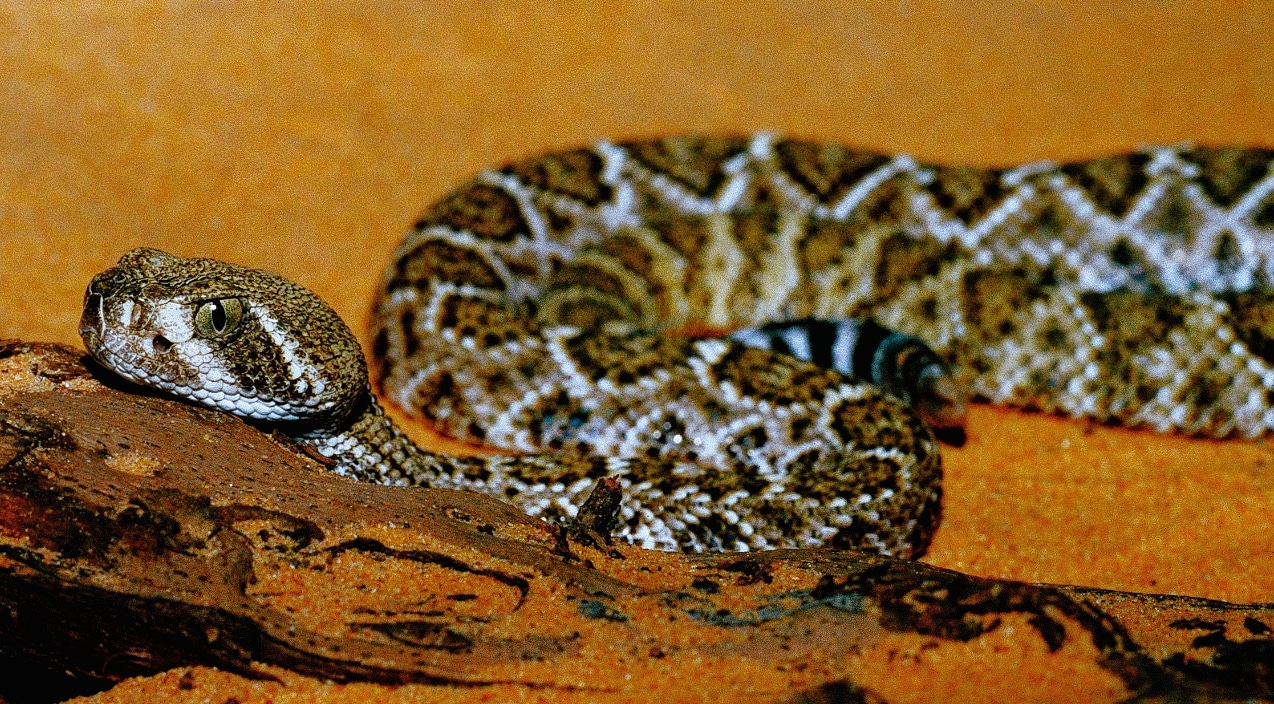
Photo credit: Bernard DUPONT via Wikimedia Commons
Experts say if you see a rattlesnake, the best thing to do is leave it alone. However, if it’s in your backyard and you got kids or animals we can certainly understand your desire to get rid of it. If you happen to find yourself in a situation where you’ve got a freshly killed rattlesnake, this is how you skin it and prepare it for the table.
https://www.facebook.com/HerpAlliance/photos/bc.Abqb7UtCaE1Xus9ULkm3T0soCA-yviKF64C3n5tRXL8Ow_7M8XlaApqGWs5KBCwlZgkcyFwpZdV-EwzV3V3wLVyi_etw5PlaNhCUUUGLsXI7R1KW9xNp2p_ULpoJfxch3aUC9TaoVOEzfKAVCyuvDMXwcFORyTMMm-RVFkDT_lMCCA/664188203606652/?type=1&opaqueCursor=AbpKK5ApL_QltS6ix6P5-CeM_QibhdISSlp5AZ-khsFi2Q5PzB_WeL_x_e9JBZeZdx5nqFZBFpoweR26t7lMgBdnhYt_uRyJ4I3xju2BLXDDaslWUKOwDstrI039al6hAEpcfWrqcTf9_IW6dm1WBPXU8eOzYtqsM0tkeP3x0fCfV1kPExu6coywUoDm-MdTG-1gnLk06ZrQQWcQfzGSSE89u96tjWdavfr-TdL0SGEBDLpR9A-BE0XcadkUD81YiOQlZv1M7exqI2m1asYnbQB8ElMK5UznGO-NGEsSkkNHcYFQqn7RdcO4HV6IOAX9YfkoYaWvZhm-Wr5fIOoyUcjNNM9hssClder7yxLr7PobkFjVky8bUt5TODRr4JfyvKZXEIgk9VW6fhRKDMSiyaHS6zJhWEtMyz8jp_Rq-ZNLC3OdLJ9iyXNzvYn_KoMhQQLoX25ZQSVecfvMFOnnhzsP9XoCc40_XzKU0mF-S6VLaA&theater
Seven Steps For Skinning & Preparing Rattlesnake
- Remove the head – Snakes have been known to bite even when they are dead. A snake’s nervous system has built up reaction patterns and when triggered can cause the muscles to bite down on whatever is close to it. With that said, use a long-handled shovel, hoe, or machete to remove the head at a safe distance.
- Wear gloves – You’ll want to wear latex gloves when cleaning the snake because they can carry salmonella, just like chickens and turtles. Often times when folks clean snakes they are not around a sink with soap so gloves are the next best thing to protect yourself from getting salmonella poisoning.
- Use scissors to open the snake’s belly – Once the head is removed, use the scissors and cut open the snake’s belly, starting from where the head used to be and cut all the way to the tail. You can also cut off the rattler at the end of the tail and save it as a souvenir.
- Use a sharp knife to remove the skin – Now that the belly is open use a sharp blade to loosen the skin from the muscle. Start at the neck area and work your way down to the tail. You do this step so when it comes time to skin the snake it will come off perfectly and won’t rip the skin.
- Peel the skin off the meat – Peel the skin at the neck of the snake far enough down so that you can grab the meat with one hand. Then with your other hand or a pair of pliers peel the skin like a banana all the way to the end of the tail until the skin comes off the meat. You can then stretch the skin out on a flat surface (like a board) with the scales facing down and completely cover it with salt. Or you can roll the skin up and put it in the freezer.
- Remove the entrails – Now what you want to do is remove the entrails from the inside of the body of the snake. You can start at the neck and pull it all out in one big long piece leaving the body cavity empty.
- Cutting the snake into proper portions – In order to cook the snake properly, you’ll need to cut the snake into 2-3 inch chunks. The ends of the snake, like the neck and tail, can be cut into longer pieces since it’s smaller with less meat. Doing this makes it to where each chunk of meat will cook within the same amount of time.
That’s it! You are set and ready to cook that rattlesnake. Now all you need to do is put some oil in a pan and place the stovetop heat on 375 degrees Fahrenheit (which is normally marked as number 5 on a cooktop stove). Place the meat in the pan and let it cook for 2-3 minutes or until it begins to turn golden brown. Bon appétit, it’s ready to serve!










